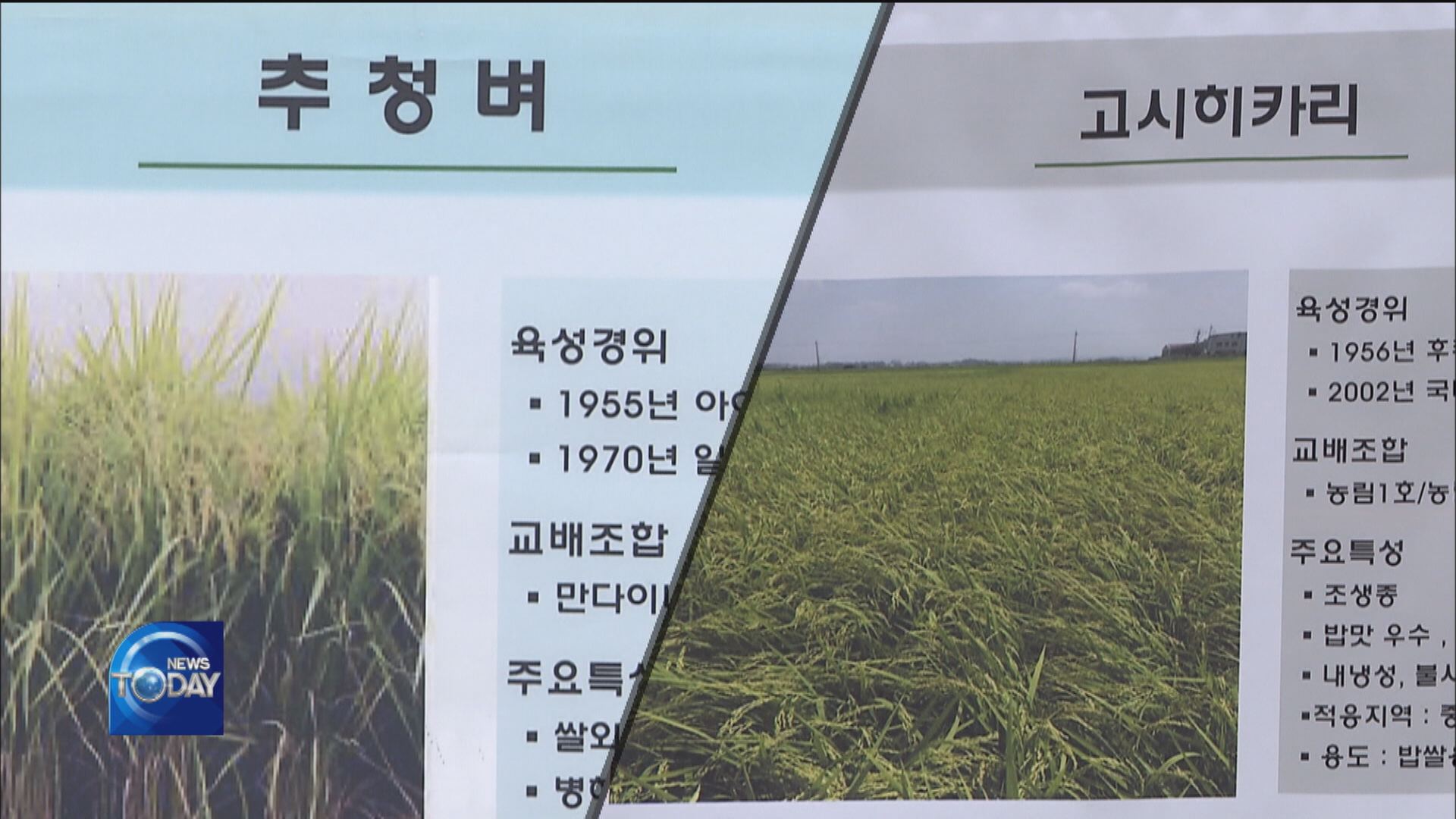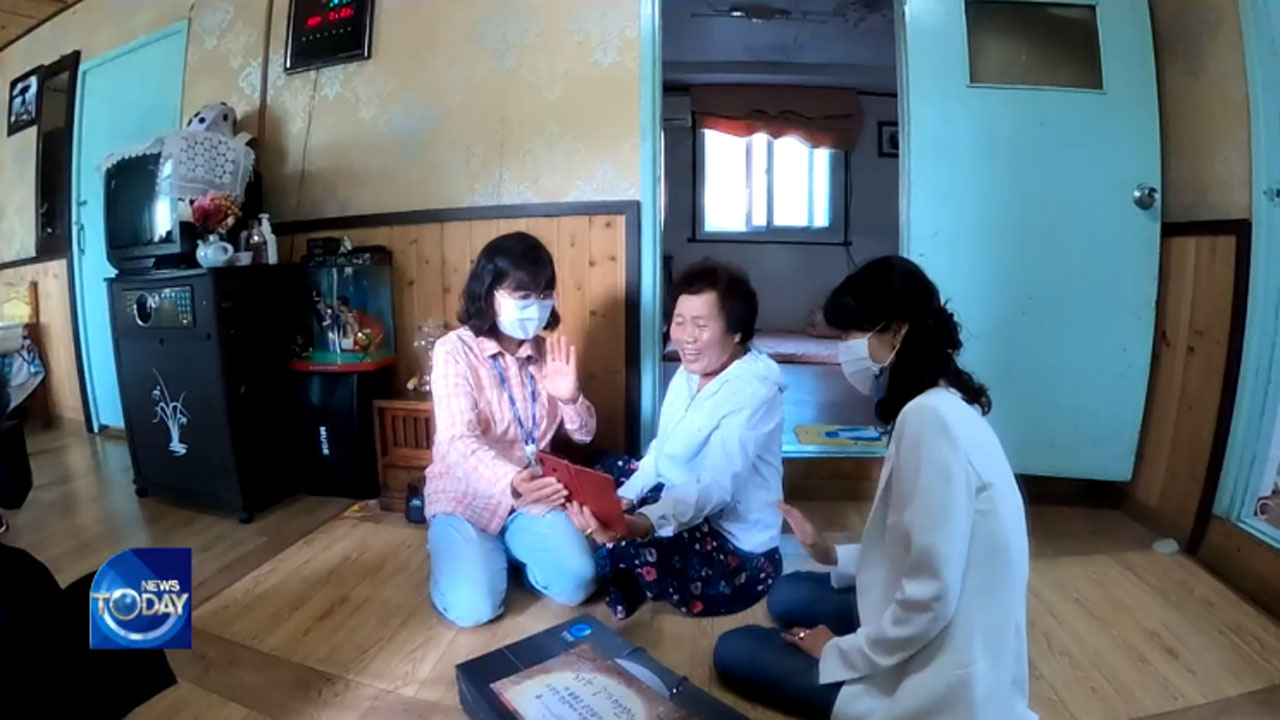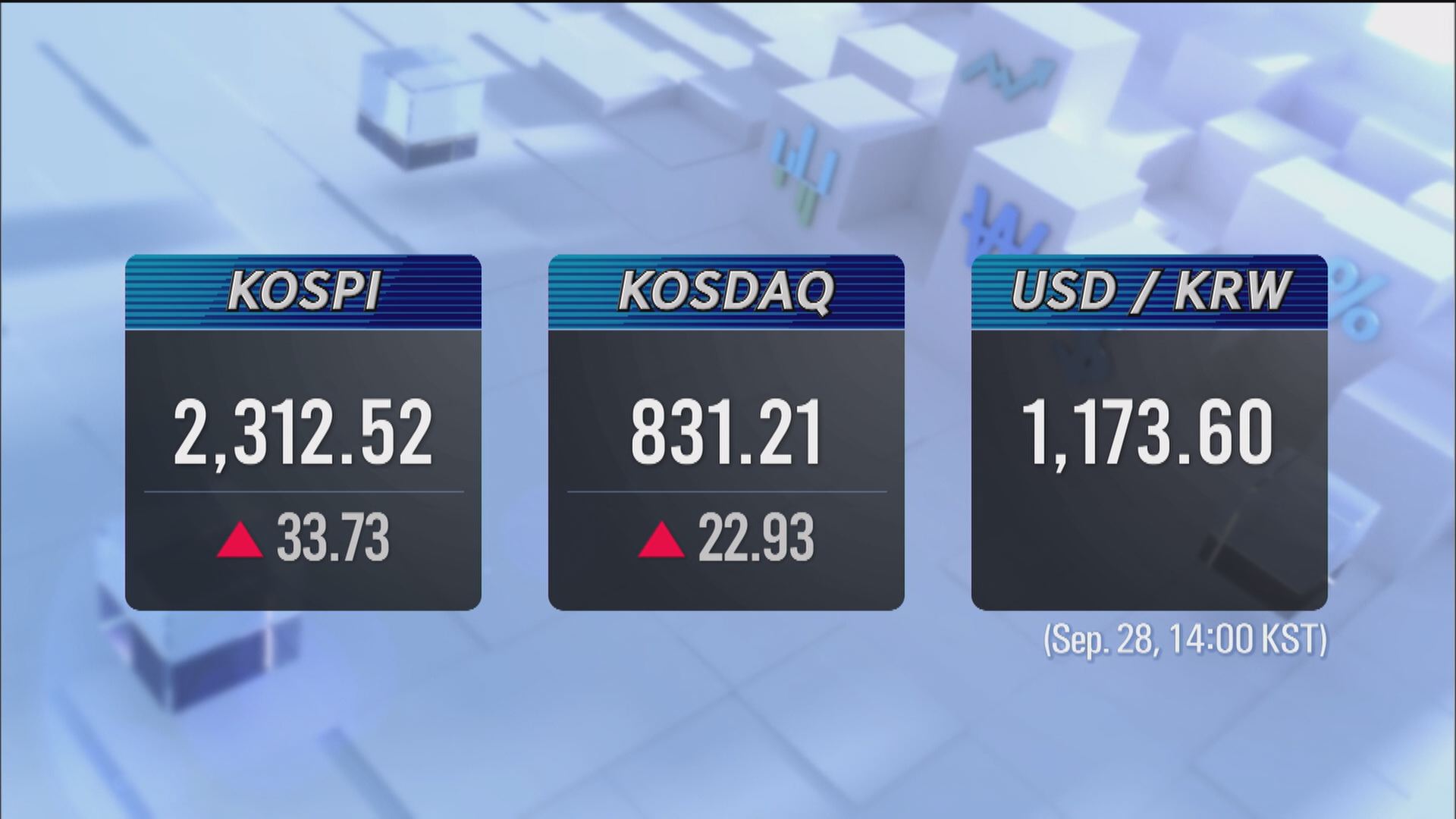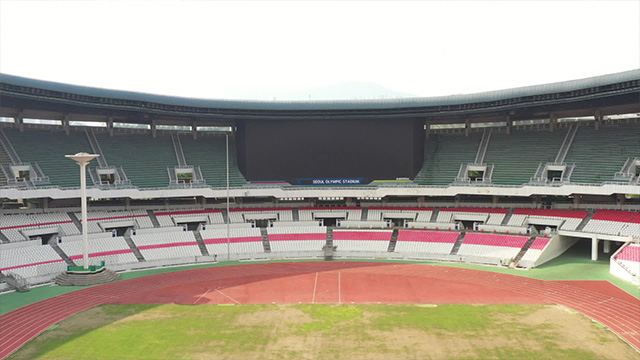DEVELOPMENT OF LOCAL RICE VARIETIES
입력 2020.09.28 (15:11)
수정 2020.09.28 (16:50)
읽어주기 기능은 크롬기반의
브라우저에서만 사용하실 수 있습니다.
[Anchor Lead]
Some rice varieties grown in Korea are Japanese, such as Koshihikari and Akibare. Since Japan's export control last year, Korean authorities are stepping up their efforts to replace the Japanese rice varieties with local ones.
[Pkg]
Rice plants of different varieties are planted in these research fields. But some have collapsed. Most of the rice plants that fell during the typhoons are the Japanese varieties of Koshihikari and Akibare. According to a Chungcheongbuk-do Agricultural Research and Extension Services study, the Japanese rice varieties suffered more damage from the heavy winds. Even the rice varieties in Chungcheongbuk-do Province named after local places are mostly Japanese. So the provincial government is stepping up efforts to develop Korean rice varieties. Researchers cook rice to check its flavor and texture. They also study the rice varieties' pest resilience, output volume and profitability.
[Soundbite] KIM IK-JAE(AGRICULTURAL RESEARCH AND EXTENSION SERVICES) : "We can't increase the seed amount all at once. It takes four years for the newly developed variety to reach the farmers."
The provincial government is in a hurry to develop local rice brands, because the government has decided to ban the production of foreign rice varieties starting in 2023. The boycott of Japanese rice varieties was triggered by the "No Japan" movement which started last year. There is also the important task of protecting Korean varieties with superior quality.
[Soundbite] LEE CHAE-YEONG(RESEARCHER, AGRICULTURAL RESEARCH AND EXTENSION SERVICES) : "People tend to think that Japanese rice varieties are high quality. But our taste tests showed local rice varieties taste better than the Japanese ones."
Efforts to develop local rice varieties should lead to a boost in Korean rice cultivation as well as quality, and ultimately to more rice consumption in Korea.
Some rice varieties grown in Korea are Japanese, such as Koshihikari and Akibare. Since Japan's export control last year, Korean authorities are stepping up their efforts to replace the Japanese rice varieties with local ones.
[Pkg]
Rice plants of different varieties are planted in these research fields. But some have collapsed. Most of the rice plants that fell during the typhoons are the Japanese varieties of Koshihikari and Akibare. According to a Chungcheongbuk-do Agricultural Research and Extension Services study, the Japanese rice varieties suffered more damage from the heavy winds. Even the rice varieties in Chungcheongbuk-do Province named after local places are mostly Japanese. So the provincial government is stepping up efforts to develop Korean rice varieties. Researchers cook rice to check its flavor and texture. They also study the rice varieties' pest resilience, output volume and profitability.
[Soundbite] KIM IK-JAE(AGRICULTURAL RESEARCH AND EXTENSION SERVICES) : "We can't increase the seed amount all at once. It takes four years for the newly developed variety to reach the farmers."
The provincial government is in a hurry to develop local rice brands, because the government has decided to ban the production of foreign rice varieties starting in 2023. The boycott of Japanese rice varieties was triggered by the "No Japan" movement which started last year. There is also the important task of protecting Korean varieties with superior quality.
[Soundbite] LEE CHAE-YEONG(RESEARCHER, AGRICULTURAL RESEARCH AND EXTENSION SERVICES) : "People tend to think that Japanese rice varieties are high quality. But our taste tests showed local rice varieties taste better than the Japanese ones."
Efforts to develop local rice varieties should lead to a boost in Korean rice cultivation as well as quality, and ultimately to more rice consumption in Korea.
■ 제보하기
▷ 카카오톡 : 'KBS제보' 검색, 채널 추가
▷ 전화 : 02-781-1234, 4444
▷ 이메일 : kbs1234@kbs.co.kr
▷ 유튜브, 네이버, 카카오에서도 KBS뉴스를 구독해주세요!
- DEVELOPMENT OF LOCAL RICE VARIETIES
-
- 입력 2020-09-28 15:11:39
- 수정2020-09-28 16:50:39

[Anchor Lead]
Some rice varieties grown in Korea are Japanese, such as Koshihikari and Akibare. Since Japan's export control last year, Korean authorities are stepping up their efforts to replace the Japanese rice varieties with local ones.
[Pkg]
Rice plants of different varieties are planted in these research fields. But some have collapsed. Most of the rice plants that fell during the typhoons are the Japanese varieties of Koshihikari and Akibare. According to a Chungcheongbuk-do Agricultural Research and Extension Services study, the Japanese rice varieties suffered more damage from the heavy winds. Even the rice varieties in Chungcheongbuk-do Province named after local places are mostly Japanese. So the provincial government is stepping up efforts to develop Korean rice varieties. Researchers cook rice to check its flavor and texture. They also study the rice varieties' pest resilience, output volume and profitability.
[Soundbite] KIM IK-JAE(AGRICULTURAL RESEARCH AND EXTENSION SERVICES) : "We can't increase the seed amount all at once. It takes four years for the newly developed variety to reach the farmers."
The provincial government is in a hurry to develop local rice brands, because the government has decided to ban the production of foreign rice varieties starting in 2023. The boycott of Japanese rice varieties was triggered by the "No Japan" movement which started last year. There is also the important task of protecting Korean varieties with superior quality.
[Soundbite] LEE CHAE-YEONG(RESEARCHER, AGRICULTURAL RESEARCH AND EXTENSION SERVICES) : "People tend to think that Japanese rice varieties are high quality. But our taste tests showed local rice varieties taste better than the Japanese ones."
Efforts to develop local rice varieties should lead to a boost in Korean rice cultivation as well as quality, and ultimately to more rice consumption in Korea.
Some rice varieties grown in Korea are Japanese, such as Koshihikari and Akibare. Since Japan's export control last year, Korean authorities are stepping up their efforts to replace the Japanese rice varieties with local ones.
[Pkg]
Rice plants of different varieties are planted in these research fields. But some have collapsed. Most of the rice plants that fell during the typhoons are the Japanese varieties of Koshihikari and Akibare. According to a Chungcheongbuk-do Agricultural Research and Extension Services study, the Japanese rice varieties suffered more damage from the heavy winds. Even the rice varieties in Chungcheongbuk-do Province named after local places are mostly Japanese. So the provincial government is stepping up efforts to develop Korean rice varieties. Researchers cook rice to check its flavor and texture. They also study the rice varieties' pest resilience, output volume and profitability.
[Soundbite] KIM IK-JAE(AGRICULTURAL RESEARCH AND EXTENSION SERVICES) : "We can't increase the seed amount all at once. It takes four years for the newly developed variety to reach the farmers."
The provincial government is in a hurry to develop local rice brands, because the government has decided to ban the production of foreign rice varieties starting in 2023. The boycott of Japanese rice varieties was triggered by the "No Japan" movement which started last year. There is also the important task of protecting Korean varieties with superior quality.
[Soundbite] LEE CHAE-YEONG(RESEARCHER, AGRICULTURAL RESEARCH AND EXTENSION SERVICES) : "People tend to think that Japanese rice varieties are high quality. But our taste tests showed local rice varieties taste better than the Japanese ones."
Efforts to develop local rice varieties should lead to a boost in Korean rice cultivation as well as quality, and ultimately to more rice consumption in Korea.
이 기사가 좋으셨다면
-
좋아요
0
-
응원해요
0
-
후속 원해요
0

















이 기사에 대한 의견을 남겨주세요.